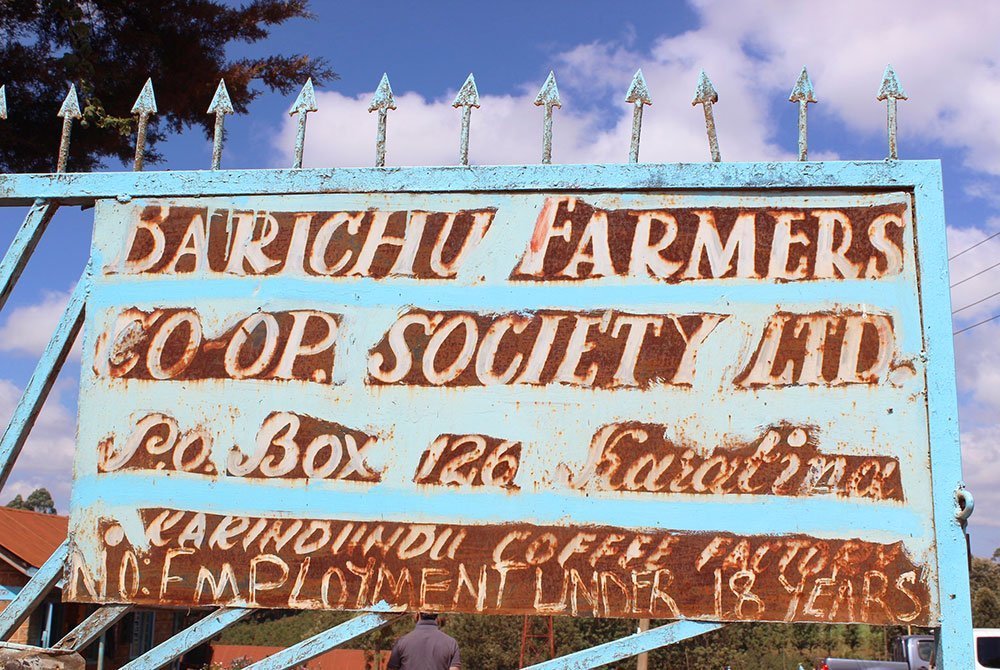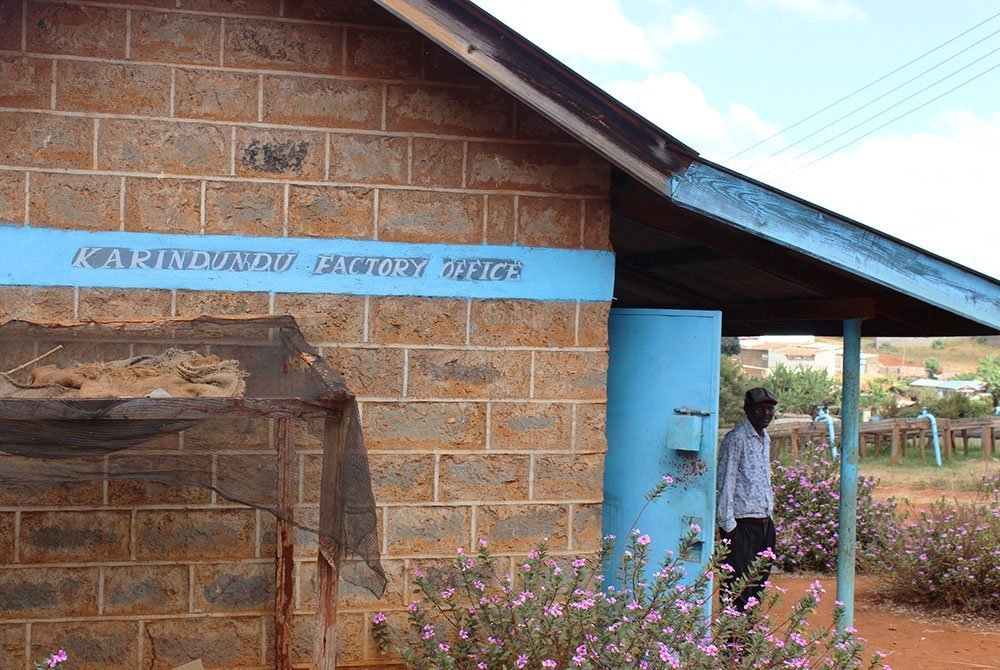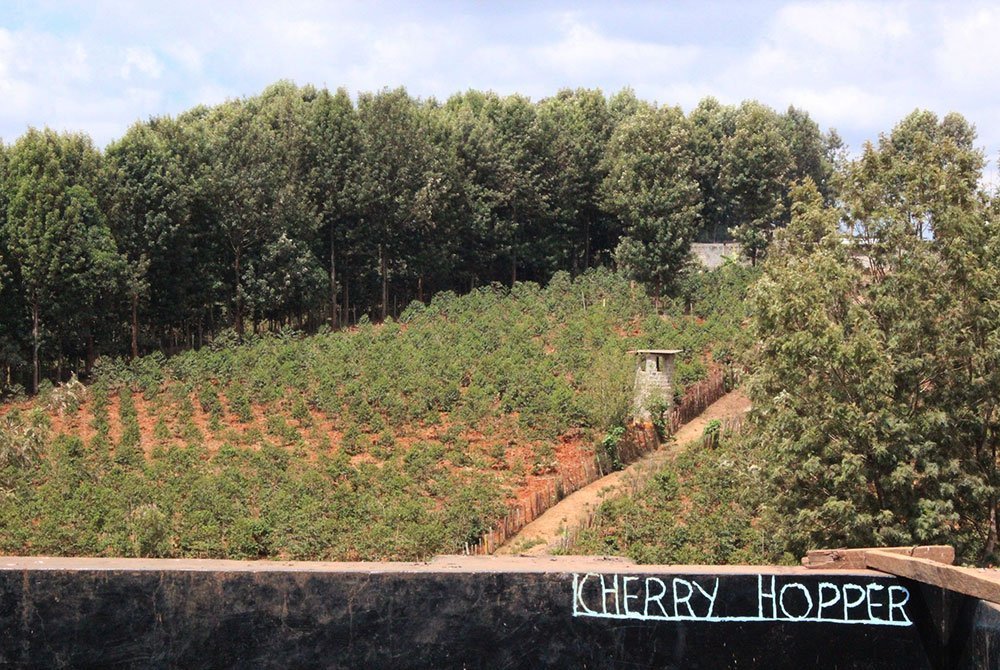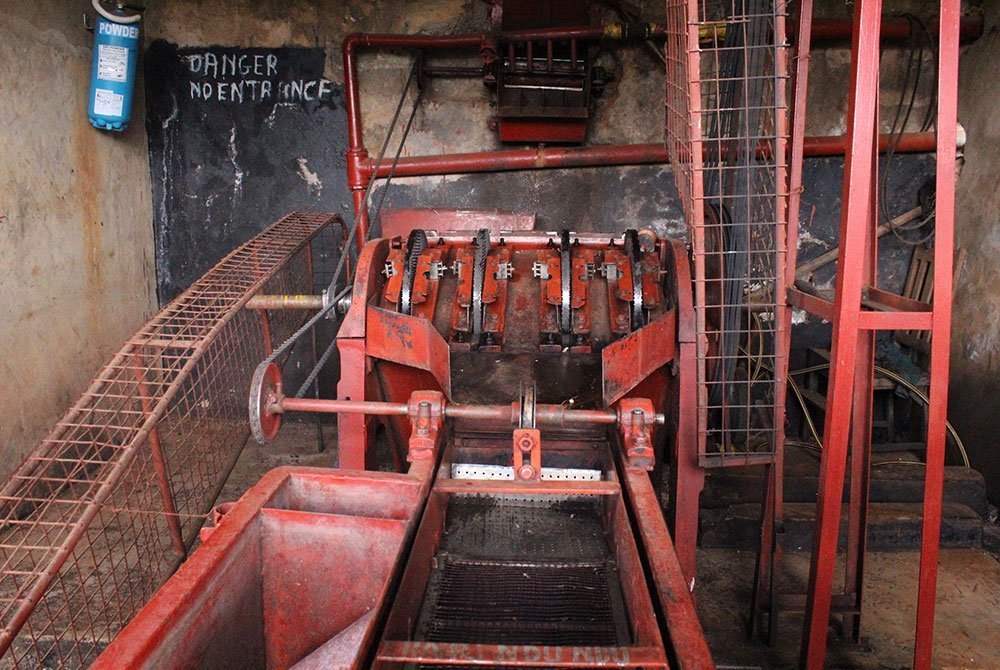
Karindundu AB high altitude coffee from mount Kenya
Karindundu is one of four coffee factories (washing stations) within the Barichu Cooperative Society.
The other three are Gatomboya, Gaturri and Karatina
All of these factories have become quite famous within specialty coffee circles in recent years since they are repeatedly producing very high quality coffee.
Close to their head office, The Barichu Cooperative Society have recently opened a coffee shop to allow local people (traditionally tea drinkers) to experience the fine coffee of this region.

Karindundu is located on the outskirts of Karatina town in Nyeri County and enjoys good altitude of 1,850 MASL, since it sits within the foothills of Mount Kenya.
This extinct volcano has created incredibly deep and rich soils within the region which are ideal for the production of high quality coffee.
The Karindundu Factory serves around 1000 members – all smallholder farmers with plots of land that rarely exceed one acre in size.
They are mainly subsistence farmers who grow coffee for cash alongside their cabbages, potatoes, mangoes and bananas, and keep livestock usually comprised of chickens and cattle.
Coffee varieties are mainly SL28 and Ruiru 11 grafted on SL28 root stock.

The Karindundu factory processes coffee using methods typical throughout Kenya.
Local people are paid to pick the ripe coffee cherries between October and January and these are pulped using disc pulpers in the wet mill.
The water used to convey the resulting mucilage-coated beans also aids quality separation by density, since heavier beans sink in the water whilst lighter beans float on the surface.
By channelling these beans separately, three grades of parchment coffee are created; P1 (the best), P2 and P3.
The parchment coffee is then channelled into large tanks where dry fermentation occurs during the following 24 hours.
Once the mucilage is loose, the beans take on a pebble-like feel and so the fermentation process is halted by washing the beans in channels full of water, where further quality separation takes place, since low grade ‘floaters’ can be directed away from the dense high-quality beans.
Next, the parchment coffee is channelled to a soak tank where it sits in cold water for around 24 hours; a process which develops the amino acids within the beans and is thought to contribute to Kenyan coffee’s unique flavours.

It will then be graded by size to create AA, AB, PB etc and finally it will be packed in grain-pro lined bags or in vacuum packs ready for export.


